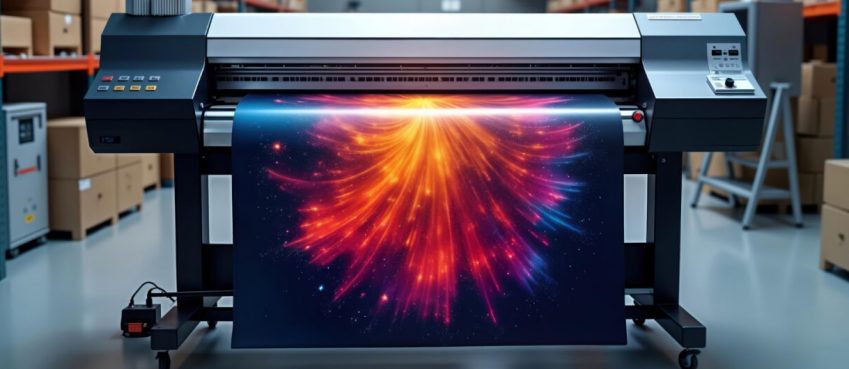
Just because a business is small doesn’t mean you don’t deserve the very best technology to help you engage your colleagues and customers. AV technology is essential for any business looking to scale up and can help you enhance your communication and distribution of important information like company updates and so much more!
However, we know that this can be daunting, especially when it comes to the cost. To make this decision easier, we’ve compiled a guide to all the AV technology you’ll need in your small company.
This article discusses the definition of AV technologies, their benefits, where you should consider using AV technology, and the five types of technologies you should incorporate in your small company.
What are AV Technologies?
Before we discuss the specific technologies, you’ll need, let’s define AV technologies for any readers who might not know. AV technology refers to the synchronization of broadcast, audio and visual content.
We see AV technologies all around us, as many of us rely on this technology for entertainment and work. AV technologies work in unison to ensure that visual and audio signals align to provide a high-production value experience. There are a few main types of AV technologies that you may recognize; these include radio, visual displays, projectors, and motion pictures.
The primary components of AV technologies consist of lighting, visual display, and audio equipment. These three components provide an immersive experience for all viewers and listeners, as well as allow small businesses like yours to cater to a huge audience.
When you attend a concert, trade show, conference, or any other large-scale event, you’re likely to see impressive light shows, engaging visual displays, and booming surround sound. This wouldn’t be possible without the help of AV technologies that work in partnership to coordinate visuals, sound, and lights.
Also read: Bobbie Formula Reviews 2025 (Read Before You Buy)What are The Benefits of Using AV Technology in A Small Business?
As a small company, you’re likely to want to understand the value of your investment before you’ve reached for your wallet. Well, we’re glad to say that there are so many benefits to adopting more AV technologies in your business operations. Below are some of the key benefits you’re likely to experience when using AV technology:
Better Communication
Communication is one of the most important things in your business, but lack of communication or miscommunication can lead to significant productivity concerns. Miscommunication commonly comes from disorganized lines of communication, such as relying on multiple email trails, word-of-mouth, or having too many communication channels.
This can lead to a variety of issues such as incomplete work, missed deadlines, and even tense workplace relationships. Incorporating visual systems like video walls is a great way to centralize your communication.
Providing a single channel to distribute information in the exact same format for everyone means that there’s little room for miscommunication. This allows you to distribute tasks, send important updates, or stream web-based content from a single source. Gone are the days of relying on cluttered inboxes!
Impressive
Small companies rely on attracting business partners and investors for success. That means that companies like yours need to make a constructive effort to impress and showcase your company as a lucrative and innovative business opportunity.
One way of doing this is to use more AV technology in your business. When you do this, you demonstrate to interested parties that you take communication and technological innovation seriously.
These are impressive attributes that are bound to turn some heads!
Versatile
Having a small business means you’ll need to scale and adapt to sudden changes. One of the best things about the AV technology is that it works with you at all times. With the help of a great system integrator, you can invest in technology that grows with you, not against you!
Lots of AV technologies are also great for many uses, meaning you can have your technology facilitate a conference one day and then a trade show the next. This means you’re getting ultimate value for money and maximum output!
Also read: 10 Types of Developer Jobs: IT JobsWhere Should You Use AV Technologies in Your Business?
If you’re still not convinced that you need this technology, here’s a quick guide to the settings you’ll definitely need them:
Conferencing
Conferencing is integral to any business, no matter the size. This allows businesses to communicate important information about products, lead meetings and so much more. However, the traditional slideshow conferencing format can leave some of your audience members falling asleep. Incorporating AV technology can help transform your conference and increase engagement!
Office Spaces
Office spaces are a hub of activity, so it’s important to maintain clear lines of communication at all times. Consider using visual systems in place of a whiteboard to distribute important announcements. This can help you distribute clear and concise messages in the same format from a single source.
Trade Shows
As a small business, you might attend trade shows to build traction for your business. To turn some heads and get people talking about your business, consider using AV technology for your presentations and displays. Doing this shows that you take your business seriously, as well as improving the experience for all!
The 5 Best AV Technologies for small companies
Here are the five best AV technologies that we think you should consider for your small company:
Video Walls
Video walls are a staple in the AV world and have revolutionized how we use visual displays to convey information, entertain and engage. Video walls are surfaces consisting of multiple monitors that work in unison to act as a single screen. These screens can vary in size, all the way from 2×2 to 144×72.
There are a few different types of video walls that include LCD, LED, and rear-projected cube walls. Essentially, this technology works by using controllers, processors, and matrix switchers to display content on the screen, no matter the size of any borders. We can use video walls in many locations, such as businesses, entertainment venues, education settings, and control rooms.
Video Wall Controller
Video control systems are computer chassis with an operating system that processes input and output signals via HDMI, DVI, SDI, and LAN sources. These controllers allow users to manage the layout of their video wall and display images in any position. One of the key benefits of using a video wall controller is that users can flex as much as they like, knowing that their controller will adapt to their needs. For example, with a Dexon video wall controller, you can remotely operate your display and use several operators to help run your project.
Also read: Best CRM software for 2021Video Wall Processor
Video wall processors are essentially the brains behind video walls and are essential AV technology for your small company. This control box transforms input signals into viewable content for a multi-screen video wall.
Processors help improve resolution and facilitate collaboration. If you’re in the market for technology that can transform your presentations, you’re in luck. Video wall processors can also generate attractive presentation effects such as on-screen display, seamless switching, fading, and more!
Video Wall Matrix Switcher
If an all-in-one approach is more your style, then look no further than DEXON Systems’ DIMAX video matrix switchers. These are a must for your small company as they serve all project sizes.
This control box offers matrix switching between different input signals, scales signals, crops, converts formats and frame rates, crossfades, and generates effects. So, this box is a must if you’re looking for technology that can enhance the presentation experience and improve engagement!
Speakers
Making sure everyone can hear you when you’re presenting is an often overlooked but just as important feature of your project. Your must-have AV technologies include speakers to help you engage your audience and carry your message.
This is especially important if you’re presenting in a busy area such as a trade show, conference, or convention. When using this technology, you ensure that your audience can do what you want at all times, absorbing your message and helping you to build essential engagement.
Top 10 News
-
01
Top 10 Deep Learning Multimodal Models & Their Uses
Tuesday August 12, 2025
-
02
10 Google AI Mode Facts That Every SEOs Should Know (And Wha...
Friday July 4, 2025
-
03
Top 10 visionOS 26 Features & Announcement (With Video)
Thursday June 12, 2025
-
04
Top 10 Veo 3 AI Video Generators in 2025 (Compared & Te...
Tuesday June 10, 2025
-
05
Top 10 AI GPUs That Can Increase Work Productivity By 30% (W...
Wednesday May 28, 2025
-
06
[10 BEST] AI Influencer Generator Apps Trending Right Now
Monday March 17, 2025
-
07
The 10 Best Companies Providing Electric Fencing For Busines...
Tuesday March 11, 2025
-
08
Top 10 Social Security Fairness Act Benefits In 2025
Wednesday March 5, 2025
-
09
Top 10 AI Infrastructure Companies In The World
Tuesday February 11, 2025
-
10
What Are Top 10 Blood Thinners To Minimize Heart Disease?
Wednesday January 22, 2025







